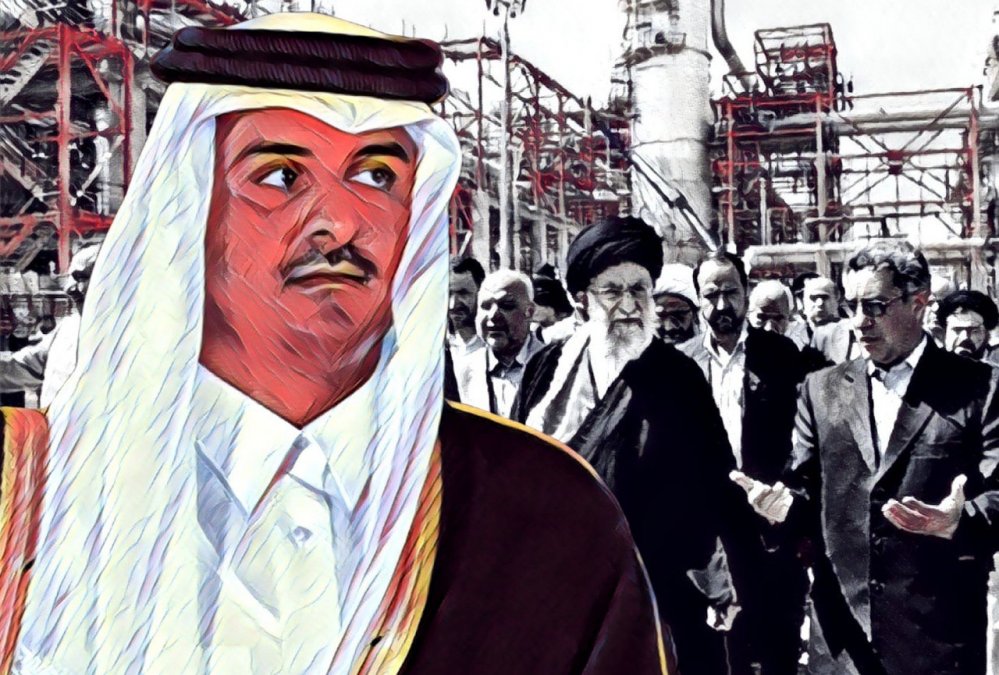A Silent Disaster in the South Pars Gas Field
A Silent Disaster in the South Pars Gas Field: According to Iran Gate, the issue of Gulf countries encroaching on Iran’s oil and gas fields is not new. Recently, Saudi Arabia and Kuwait have made concerning claims about the Arash oil field. However, events are unfolding in the South Pars gas field that have received less media coverage but are far more concerning than other similar cases.
The South Pars and North Dome gas fields are the largest gas fields in the world, shared between Iran and Qatar, with both countries extracting gas in this region. However, the point is that the lack of investment from the Iranian side in South Pars has allowed the Qataris to extract several times more than Iran, effectively seizing Iran’s underground resources.
The more worrying point is that a bigger disaster is looming in South Pars, and even if billions of dollars are invested in this field today, it would only reduce the scale of this mega energy crisis for Iran. In other words, an energy crisis for Iran is inevitable, but the question is whether it can be managed as much as possible or if we should brace ourselves for a new mega crisis.
From Europe’s Harsh Winter to Qatar’s Pleasant Spring
While Iran’s negotiating team, led by Ali Bagheri Kani, was leaving the negotiation table, the Qataris were bargaining to seal multiple contracts to sell gas to Europeans. While the Keyhan newspaper and hardline conservatives were promising a harsh winter in Europe, the Qataris were filling Russia’s place in the European energy market.
In other words, not only was there no harsh winter on the horizon for the blue-eyed Westerners of the Green Continent, but the incompetence of the Islamic Republic’s diplomats promised a pleasant spring for Qatari citizens—a spring that would come at the cost of darkening the future of the energy market for Iran and its future generations.
Not a Penny to Spare
As mentioned earlier, the lack of foreign investment in Iran’s gas industry, especially in the South Pars gas field, has left Iran far behind in competition with Qatar. Additionally, outdated technology and extraction tools in South Pars, due to the lack of investment, have led to a reduction in extraction compared to the field’s nominal capacity.
Reports indicate that the Qataris have attracted foreign investment in the North Dome gas field. Interestingly, the largest volume of investment in this joint gas field has been made by the Chinese, who had promised to invest in South Pars for Iran but not only refrained from doing so but also abandoned Iran and entered the energy market of Iran’s rival country.
Once Again, China Circumvents Iran
According to reports published in foreign media, the Chinese invested more than 60 billion dollars in the North Dome gas field in 2020. But it doesn’t stop there, as Beijing also invested a total of 27 billion dollars in the same joint gas field last year. Overall, it is estimated that the Chinese have invested over 100 billion dollars in the North Dome gas field.
But it didn’t end there, as energy market giants also entered the North Dome gas field. Among the most important investors in this area are the Dutch-British company Shell, the French company Total, the American company Phillips, and the French company Technip.
The result of these investments in Qatar was that Doha easily managed to take Russia’s place in the European energy market. Meanwhile, the Chinese paved the way for Qatar to become the world’s largest LNG producer and exporter. This is while the Chinese had promised a 20 billion dollar investment to the Rouhani government in 2018 to upgrade the South Pars gas field in terms of technology and extraction equipment.
However, with the coming to power of the Raisi government and the onset of the Ukraine war, things turned against us, and the Chinese easily turned their back on Iran and invested their capital in the Qatari gas market. This wrong approach in policymaking and diplomatic direction caused Iran not only to miss a historic opportunity to export gas to Europe but also to now await a serious mega crisis.
What Is the Mega Crisis Story?
According to a report published by the Parliamentary Research Center, Iran will face a gas deficit more than twice today’s by 2041. In other words, if Iran cannot attract foreign investment today, the natural gas supply in the country will reach 890 million cubic meters. Therefore, it is estimated that, at best, the gas shortage in Iran in 2041 will be more than 510 million cubic meters, which is double the current gas deficit in the domestic market.
These statistics and figures have only one meaning, which is turning the world’s largest gas resource holder into a gas importer. As has been said many times, Iran holds the largest gas resources in the world, but due to the delay in reviving the JCPOA and the inability to attract foreign investment, it will simply turn into a gas importer.
The more interesting and ironic point is that the most cost-effective source from which Iran can buy gas is Qatar. That is, the very country that today has outpaced Iran in the gas market will have a major leverage over its northern neighbor in less than 20 years, which could grant Doha special privileges.
Exploitation of South Pars Phase 11 Postponed to 2023
Iran Blames Foreigners for Strikes at the World’s Biggest Gas Field
English
View this article in English

